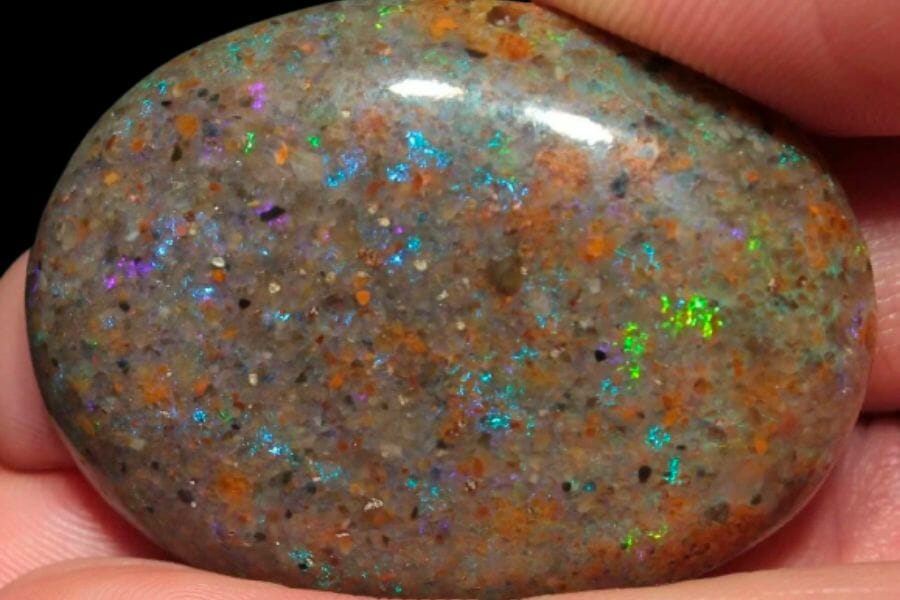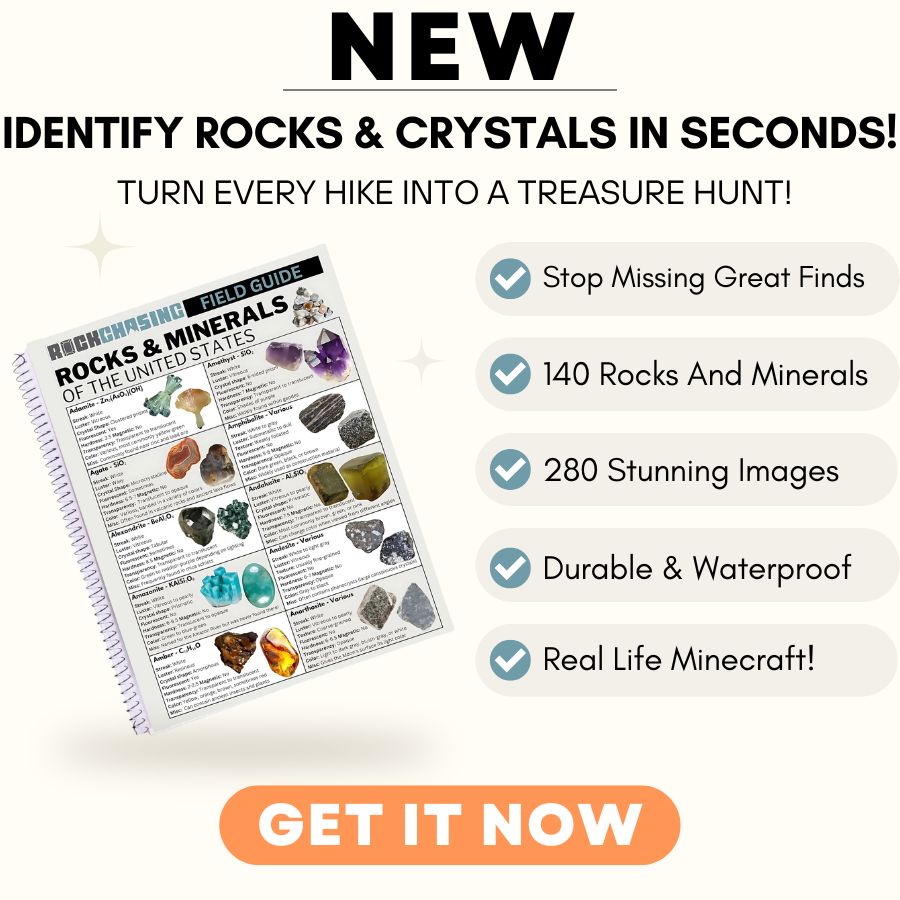Finding crystals can be a rewarding adventure, offering a unique way to explore the natural beauty and geology of the region. Whether you’re a seasoned rockhound or just getting started, knowing where to look is key to uncovering these hidden treasures.
In this state, a variety of locations provide opportunities to discover different types of crystals. From rocky outcrops in the mountains to stream beds that carry sparkling surprises, each area offers its own unique finds for those willing to search.
We can help you get started with some places you can explore for crystals below!
Crystals you can find in the US
The United States offers a wide range of crystals that reflect its diverse geology. From vibrant gems to more subtle mineral formations, there’s something to discover in nearly every region.
Calcite
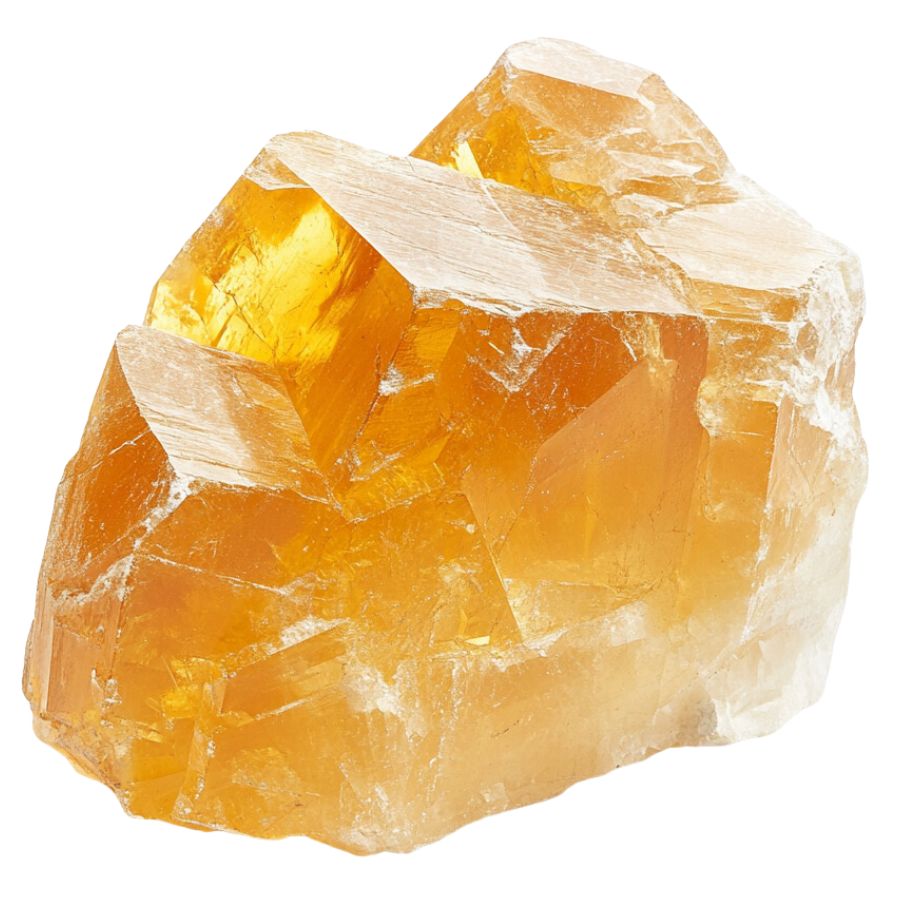
With a variety of forms and a unique property of double refraction, calcite allows objects viewed through the crystal to appear doubled. This mineral can appear in a spectrum of colors, with pure forms typically being transparent or white.
In addition, calcite reacts vigorously with acids, which aids in distinguishing it from other minerals. It also frequently contributes to the structure of sedimentary rocks such as limestone.
Gypsum
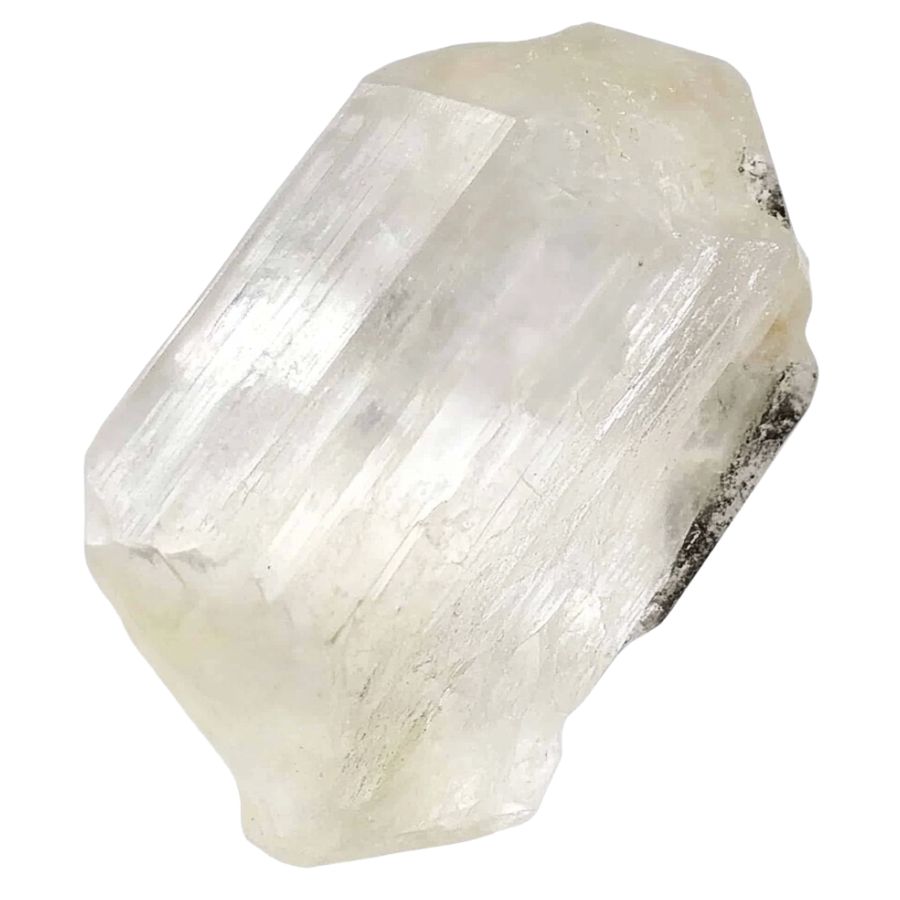
Gypsum’s notable softness allows it to be easily scratched with just a fingernail, often presenting as white or very light-colored in its pure form.
It manifests in both crystalline forms, like selenite, and massive forms such as alabaster, making it versatile in use and appearance.
Gypsum is also essential in the construction industry and is a key component in the manufacture of plaster and drywall.
Fluorite
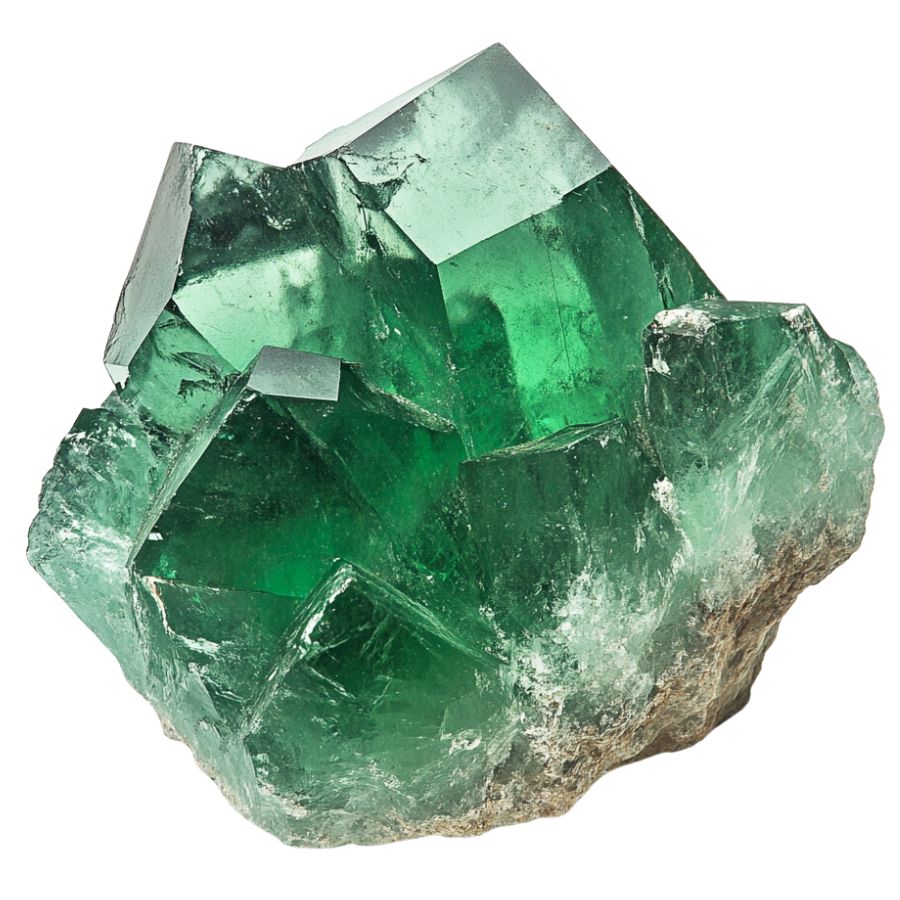
Fluorite comes in a wide range of vibrant colors, including purples, greens, blues, and yellows, and is known for forming in well-defined cubic crystals.
Beyond this, fluorite exhibits fluorescence under ultraviolet light! It can also be used in various industrial applications, including as a flux in steelmaking.
Galena
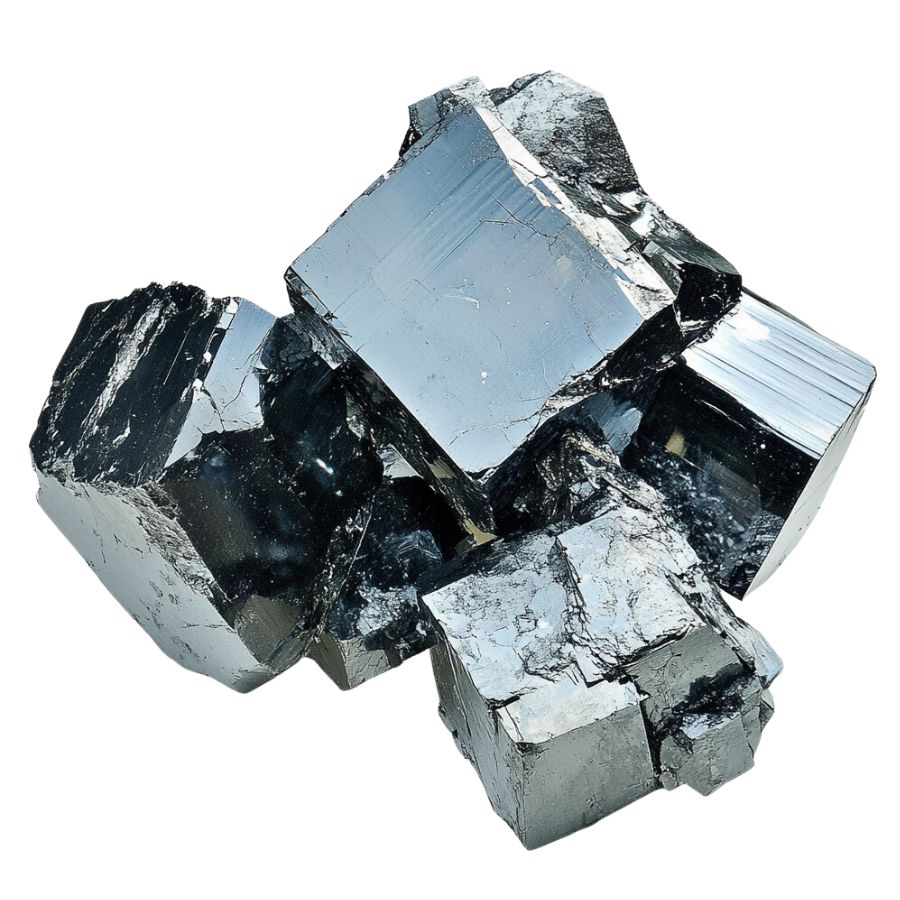
Galena distinguishes itself with a metallic luster and high density, typically found in a cube-like form. It serves as the primary ore of lead, making it important in the metal industry, while its shiny, silver color attracts collectors.
Not only does its appearance make it a subject of interest, but its weight and texture provide tangible lessons in mineral density and metallic properties. Galena also often contains traces of silver, adding to its commercial and educational value.
Corundum
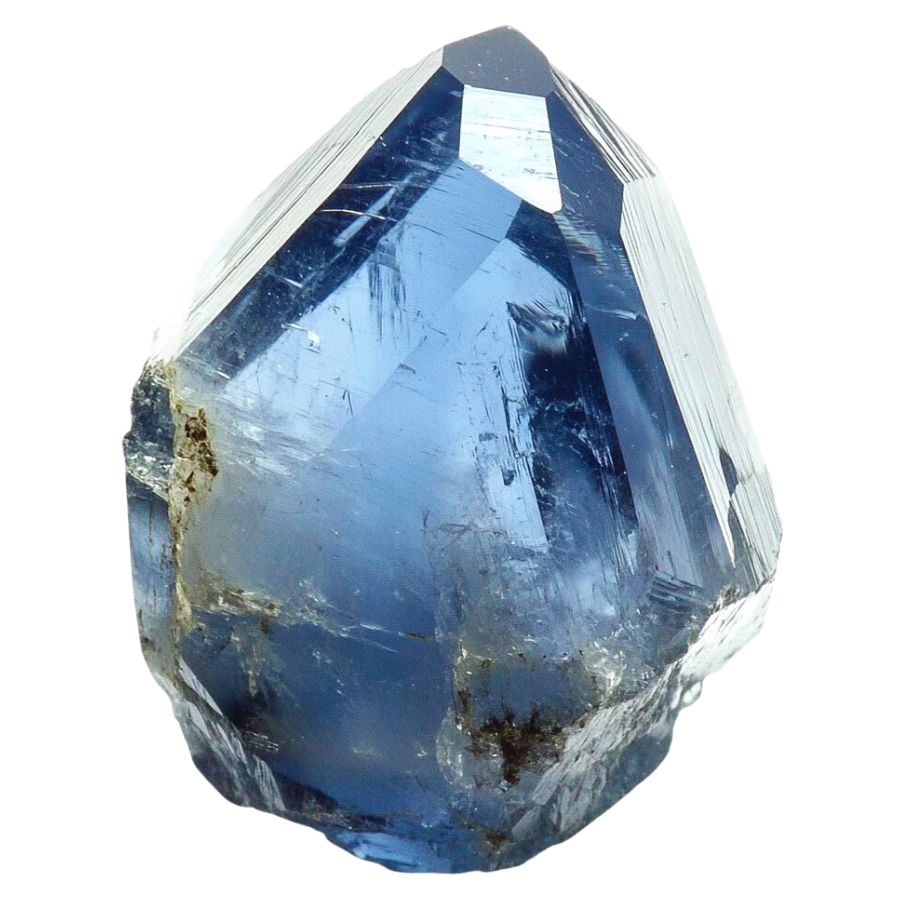
Corundum is a mineral that comes in a variety of colors, though it is typically transparent or gray. Its most famous forms are sapphires and rubies, which are prized for their vibrant blue and red hues.
The mineral is known for its remarkable hardness, ranking just below diamond on the Mohs scale. This durability makes corundum ideal for industrial abrasives and cutting tools, as well as a popular choice for fine jewelry.
Quartz
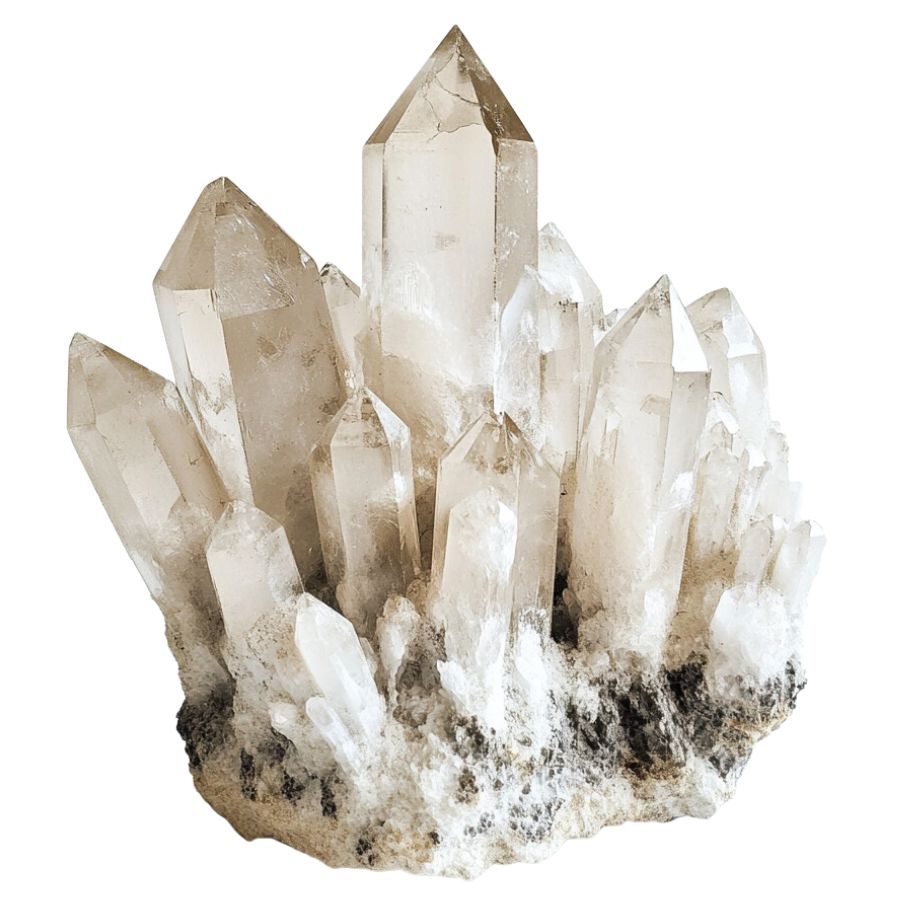
Quartz is among the most common minerals in the Earth’s crust and is prized for its durability and variety. It forms in a wide range of colors and types, from clear rock crystal to purple amethyst.
The mineral is notable for its hardness and durability, which contribute to its use in a variety of applications. Quartz is also popular in the manufacturing of electronics and watches due to its piezoelectric properties, which allow it to convert mechanical pressure into electrical energy.
Pyrite
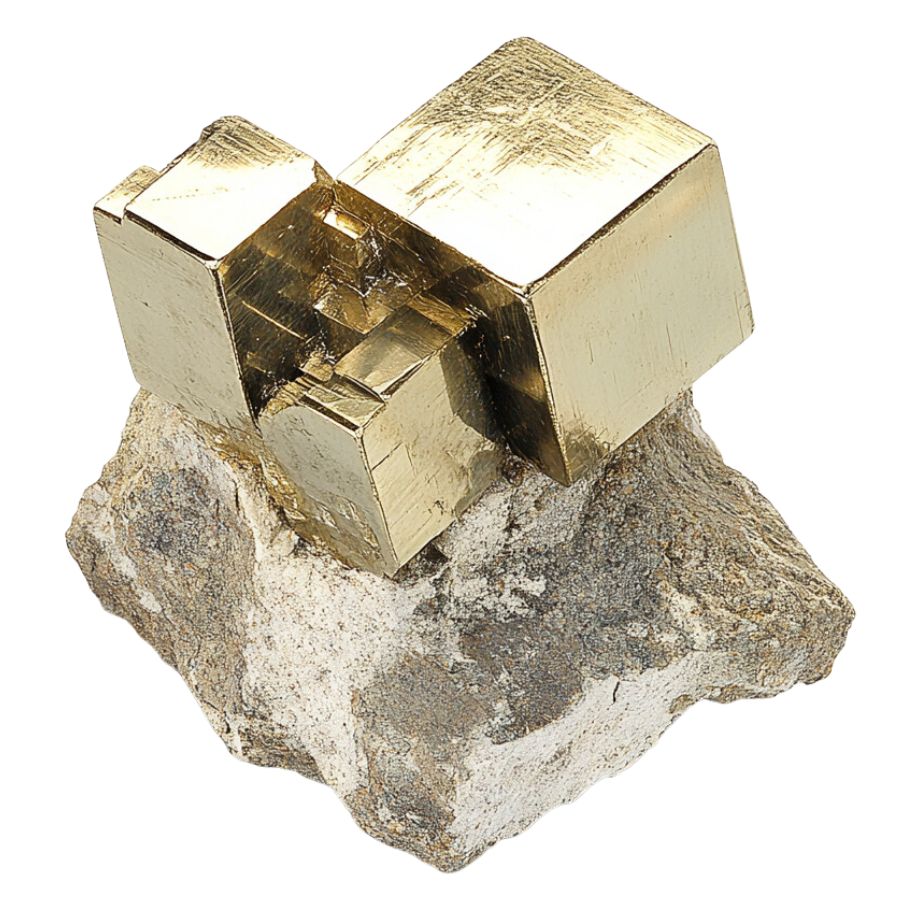
Often mistaken for gold due to its metallic luster and pale brass-yellow hue, pyrite is known colloquially as “fool’s gold.” Its characteristic cube-shaped crystal formations look man-made but are actually completely naturally formed!
Pyrite also has historical importance in producing sulfur dioxide for sulfuric acid production.
Rhodochrosite
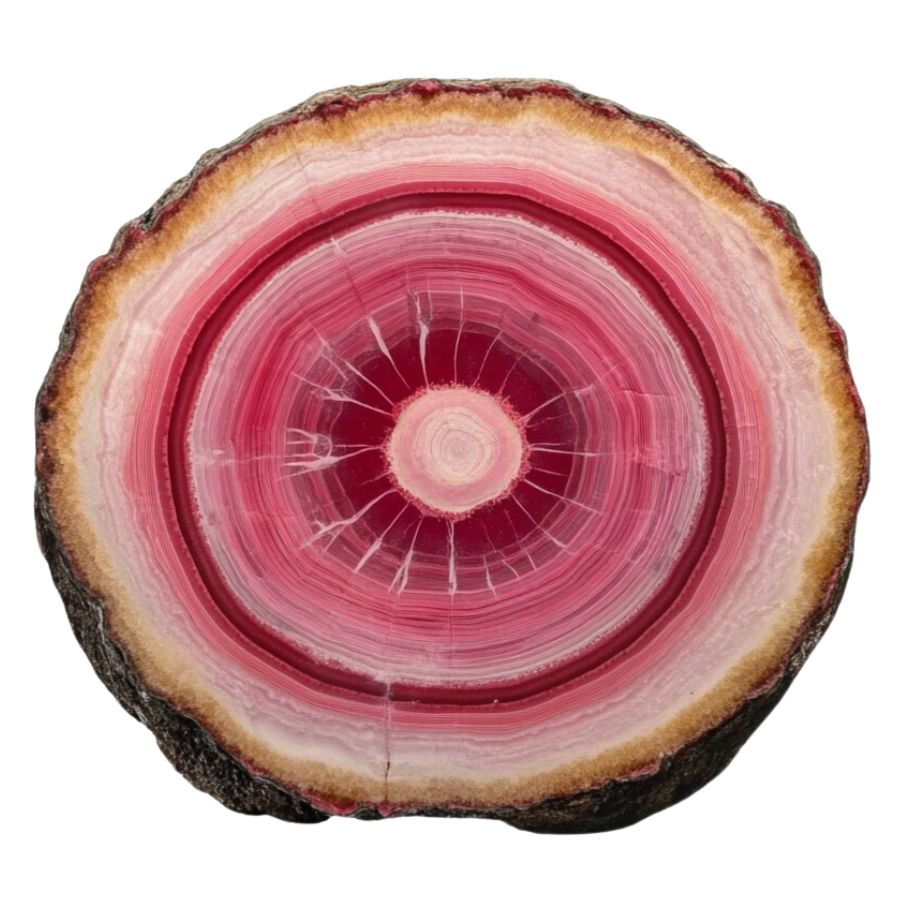
Rhodochrosite stands out with its rich pink and red hues, making it highly desirable as both a mineral specimen and a gemstone.
It typically forms in layered or stalactitic structures, with bands of colors that showcase how it grew over millions of years.
Beyond its beauty, rhodochrosite is significant as the main source of manganese, an essential element used in metal alloys.
Rhodonite
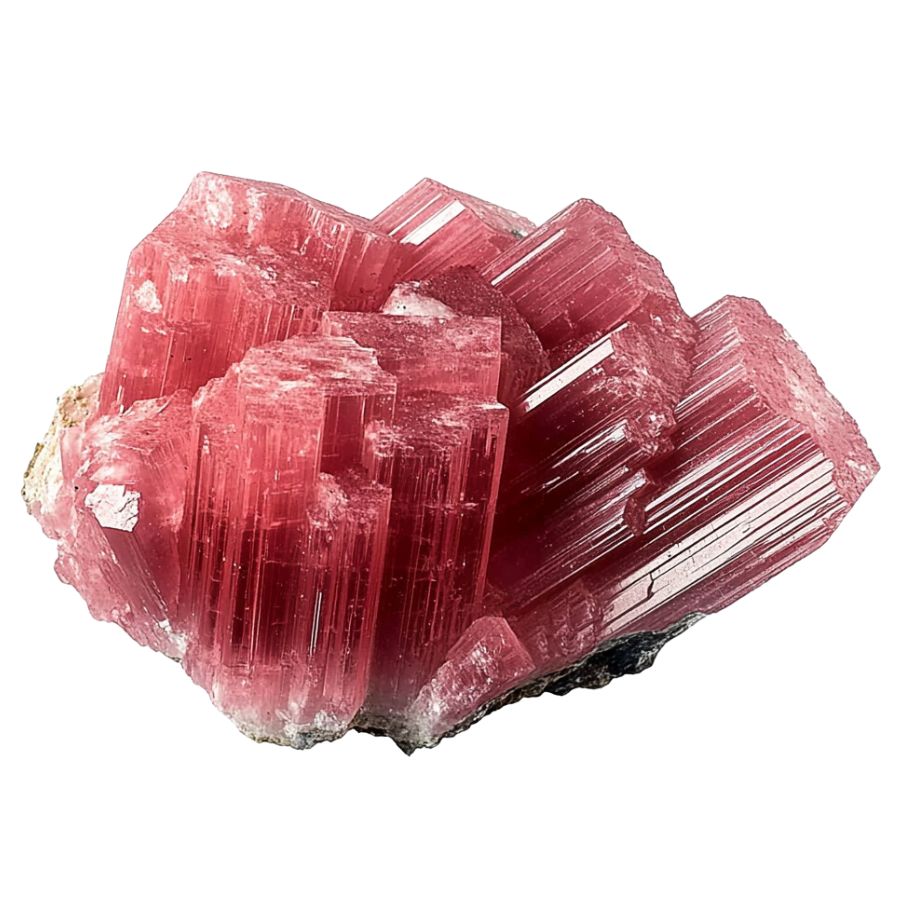
Appreciated for its deep pinks and reds, often complemented by black manganese oxide veins, rhodonite presents a dramatic appearance. It is typically found in metamorphic rocks and is used both as an ornamental stone and in jewelry.
In geology, rhodonite is significant for its role in metamorphic processes and its association with other manganese-rich minerals. It can be found in metamorphosed sedimentary rocks and is sometimes used as an indicator of the presence of manganese deposits.
Vivianite
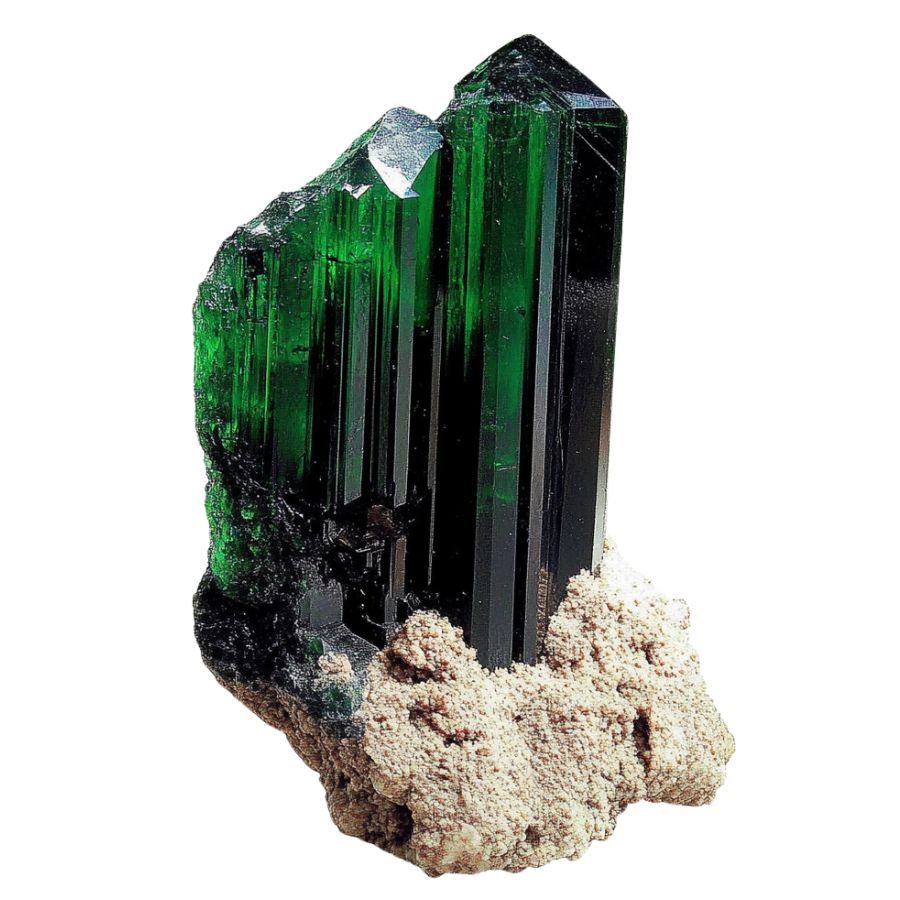
Vivianite, an iron phosphate mineral, emerges in low-oxygen environments like peat bogs or iron-rich deposits. Its striking blue to green color, which can change to a lighter shade over time due to oxidation, makes it a distinctive mineral.
Found in various geological settings, vivianite provides clues about the local conditions and the presence of phosphate deposits.
The Types of Louisiana Crystals You Can Find
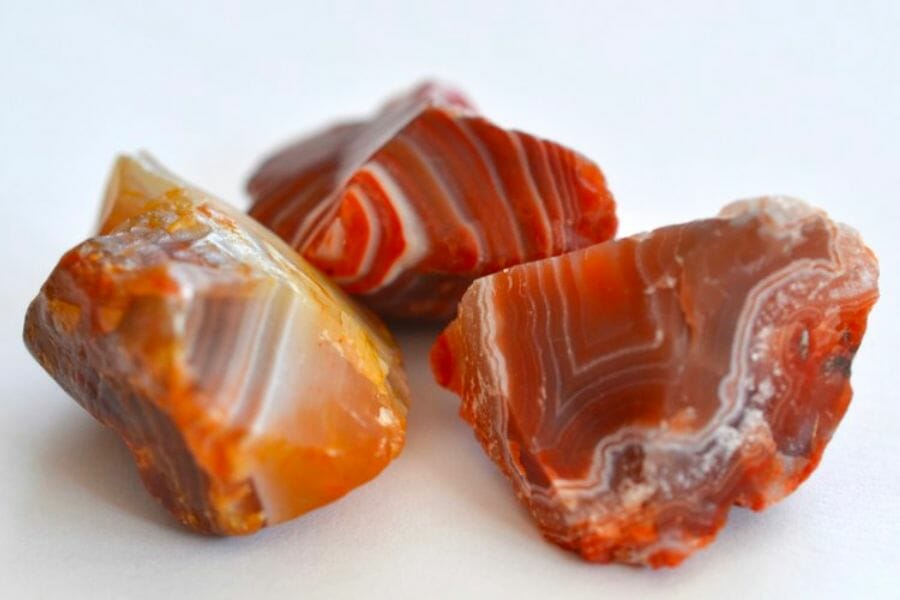
Louisiana is home to a variety of beautiful crystal formations, despite having more limited crystal resources compared to other states. There’s a wealth of opportunities to find crystals here if you seek to explore around, and here’s what you can find:
Rare crystals found in Louisiana
- Agate
- Opal (“Louisiana Opal”)
- Septarian nodule
More common crystals found here
- Carnelian
- Chalcedony
- Diamond
- Hematite
- Jasper
What rough crystals look like
When you’re out looking for crystals on your own it’s important to know what you’re looking for. This is what you need to look out for:
Look for exteriors like this
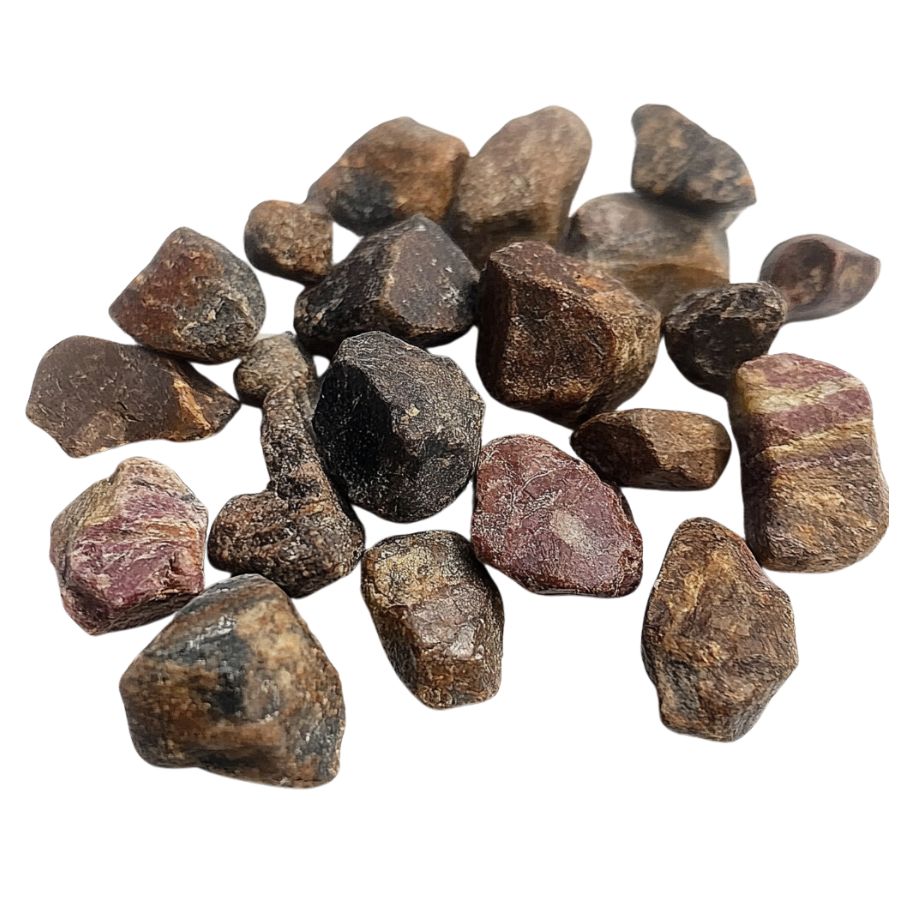
When you’re out searching for crystals in the wild, it’s essential to keep in mind that what you find won’t look like the polished stones you see in stores. One important tip is to consider what certain crystals look like in their raw, natural form.
Without the shine and smooth finish, crystals might appear rough, with jagged edges or earthy tones masking their true beauty. Understanding this can help you spot potential finds that might otherwise be overlooked.
Examine the crystal structure and shape
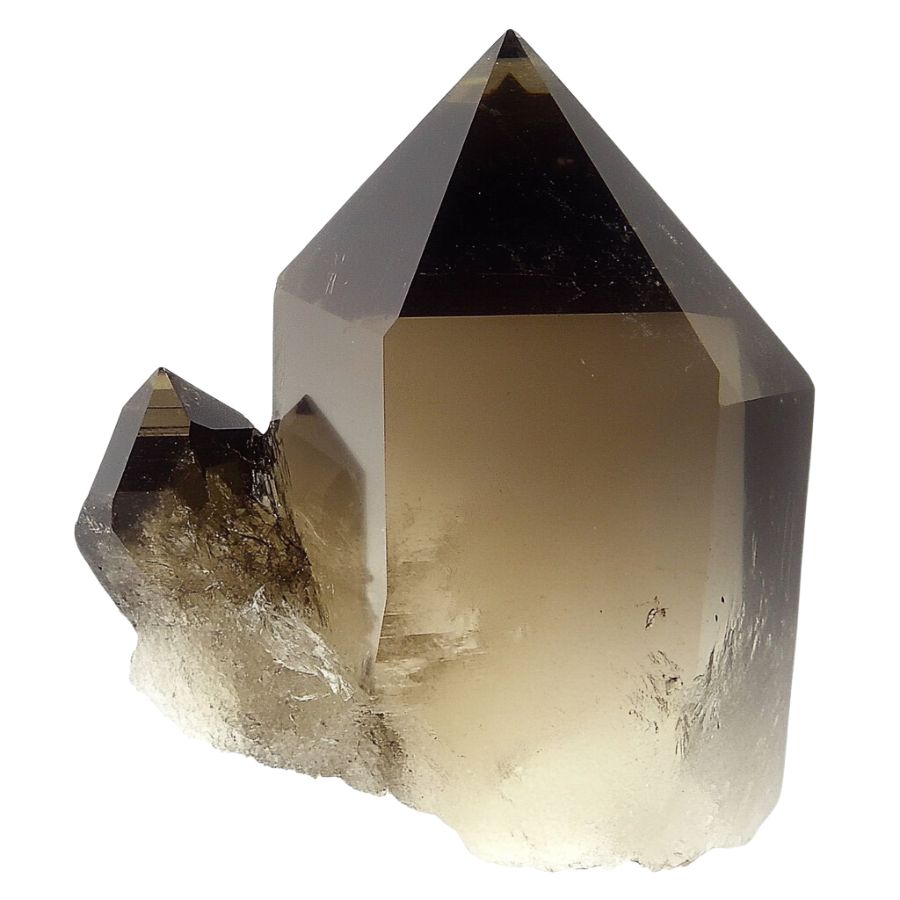
Crystals often form in specific geometric patterns that can be key to identifying them. For example, quartz is known for its hexagonal prisms, while halite typically forms cubic shapes.
By recognizing these distinct patterns, you can differentiate between various types of crystals and better understand what you’ve found.
Observe color
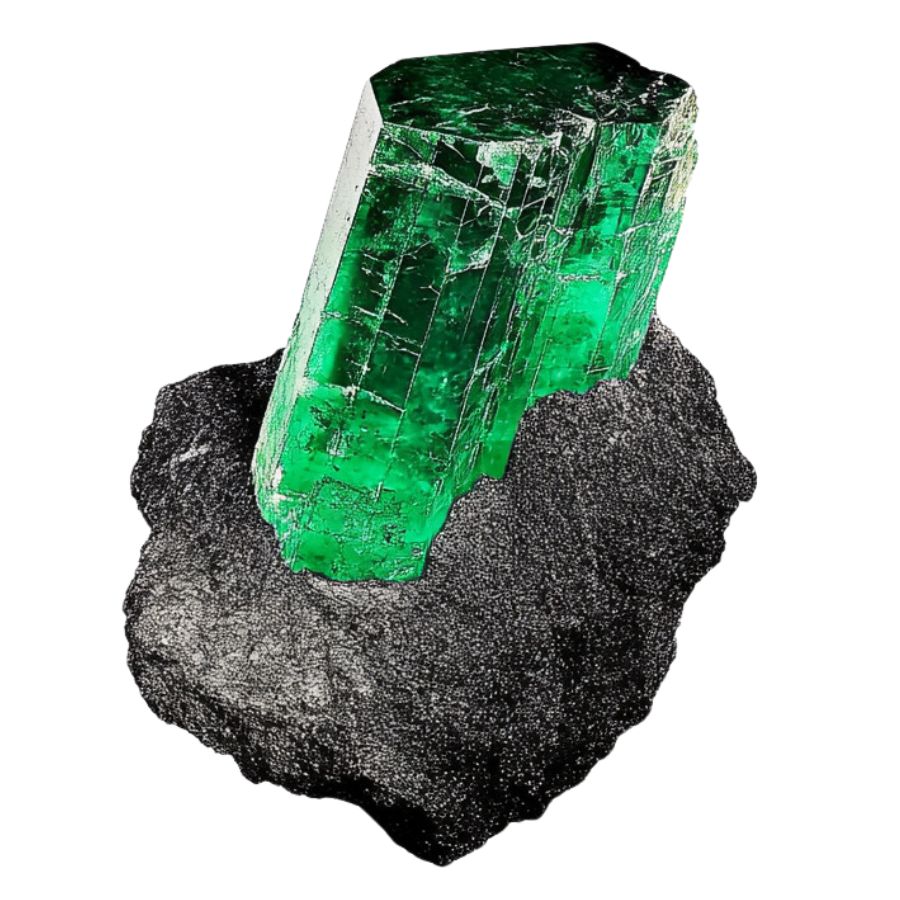
Some crystals are known for their distinct hues, like the deep purple of amethyst or the vibrant green of emerald. However, not all crystals will have strong colors; some may be clear or only slightly tinted.
Check the luster
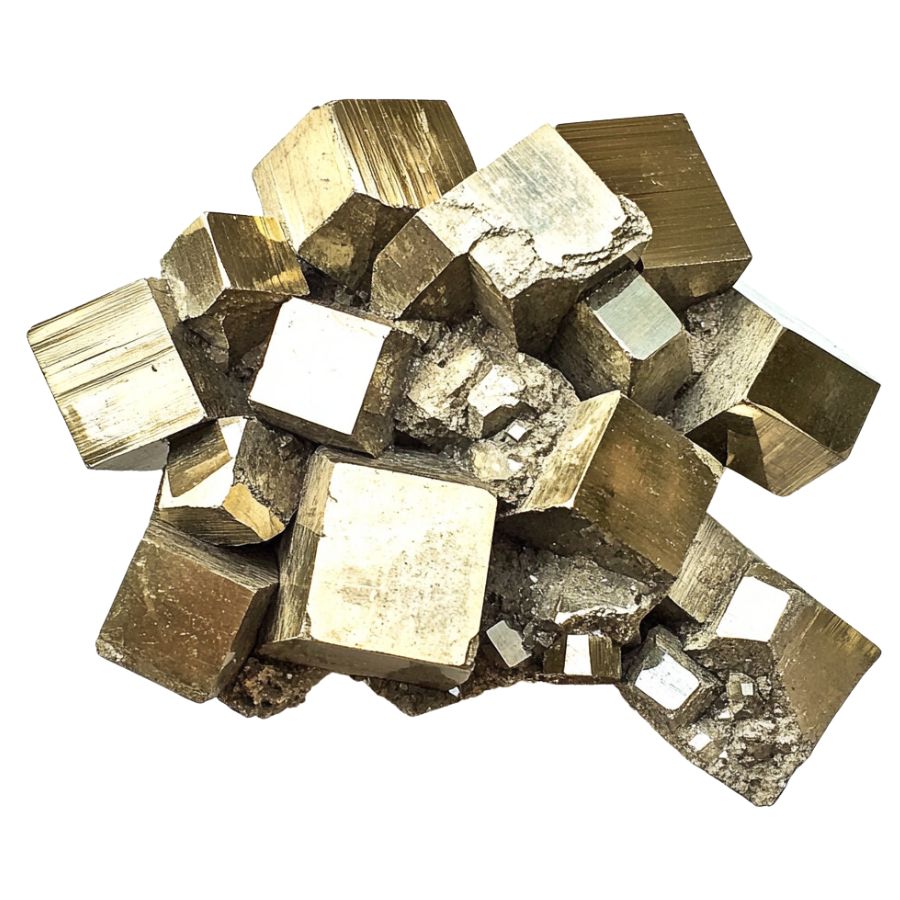
Luster refers to how a crystal’s surface interacts with light. Some crystals might have a shiny, glassy luster, while others may appear metallic or dull. This characteristic can help you determine the type of crystal you’ve found.
However, it’s important to remember that luster isn’t always obvious right away. In some cases, a crystal’s true luster will only become apparent after it’s been cleaned or polished, so keep this in mind as you examine your finds.
Evaluate the transparency
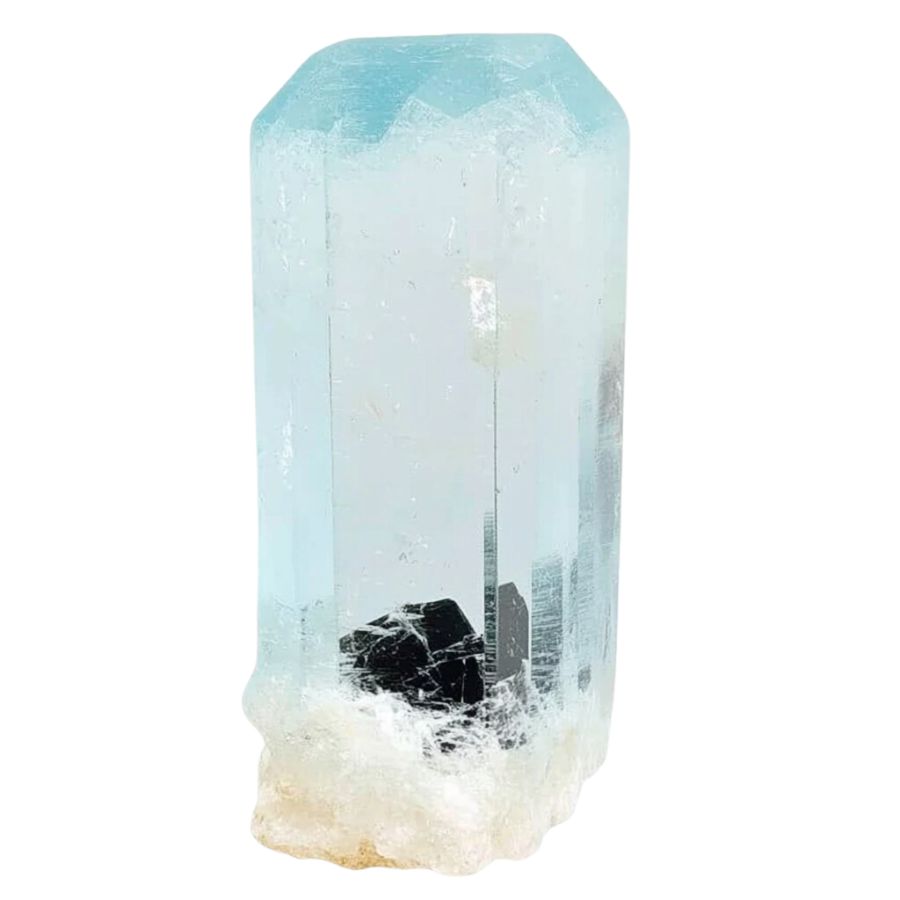
Pay close attention to how much light passes through the crystal. Some crystals are completely clear, allowing light to pass through easily, while others may be opaque and block light entirely.
You might also encounter crystals with translucent edges but opaque centers. These variations in transparency can offer valuable clues about the type of crystal you’ve found, making it easier to identify and appreciate your discovery.
A Quick Request About Collecting
Always Confirm Access and Collection Rules!
Before heading out to any of the locations on our list you need to confirm access requirements and collection rules for both public and private locations directly with the location. We haven’t personally verified every location and the access requirements and collection rules often change without notice.
Many of the locations we mention will not allow collecting but are still great places for those who love to find beautiful rocks and minerals in the wild without keeping them. We also can’t guarantee you will find anything in these locations since they are constantly changing.
Always get updated information directly from the source ahead of time to ensure responsible rockhounding. If you want even more current options it’s always a good idea to contact local rock and mineral clubs and groups
Tips on where to look
Having a better idea of where to look can greatly narrow down your search and increase your chances of finding crystals. By focusing on environments where crystals are likely to be exposed, you can spend less time searching and more time discovering.
Outcrops and Exposed Rock
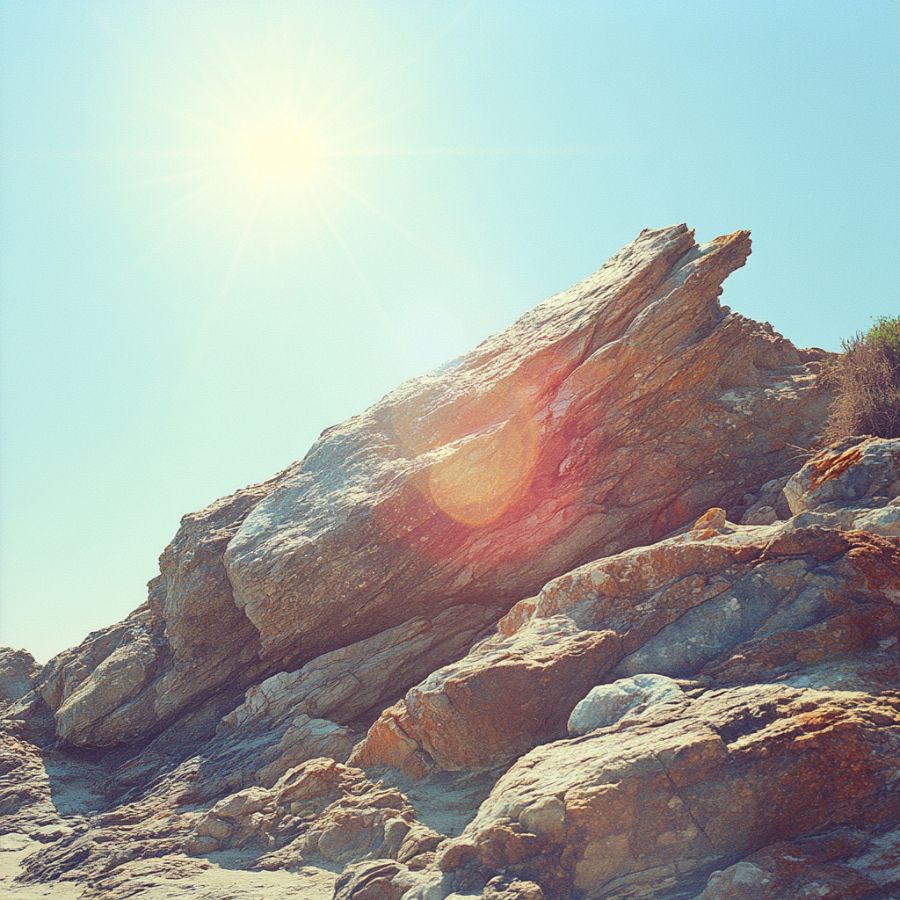
Rocky outcrops are prime locations for finding crystals and minerals. Search along the edges of outcrops, particularly where erosion has worn away the surrounding soil, revealing the rock underneath.
Pay close attention to any visible cracks, crevices, or small cavities within the outcrop, as these are often where crystals develop and can be extracted with minimal effort.
Stream Beds and Gravel Deposits
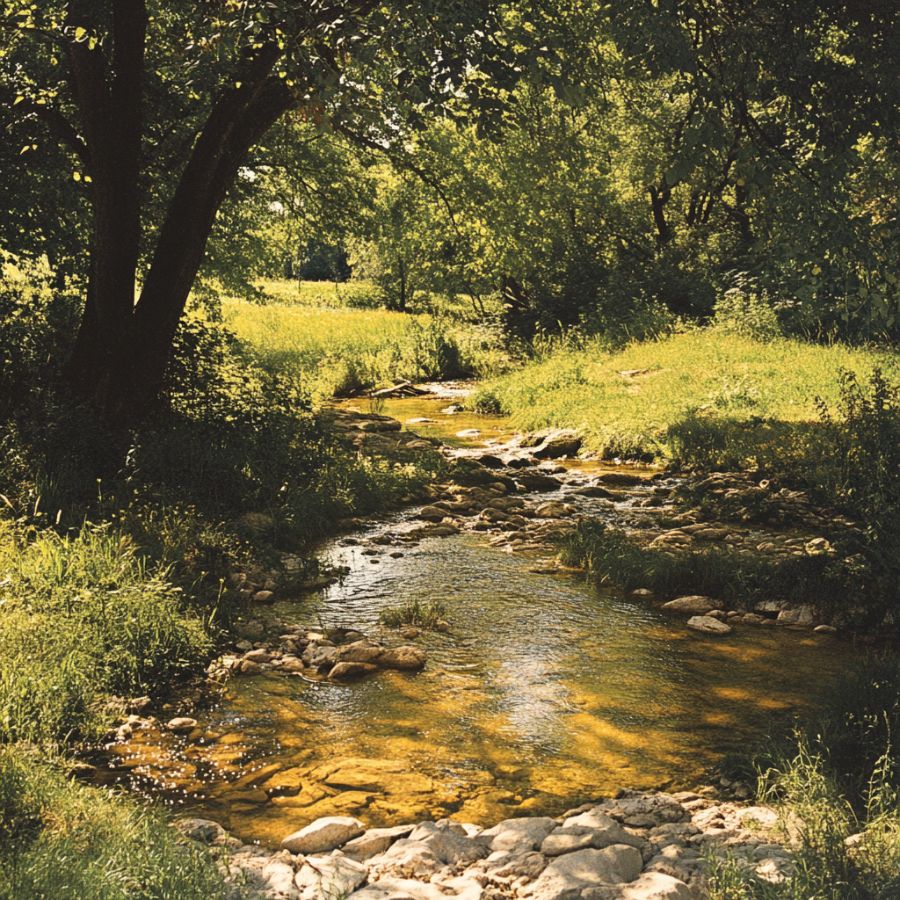
Stream beds are dynamic environments where water flow constantly shapes the landscape. Over time, water can erode rocks upstream, breaking them down and carrying mineral fragments, including crystals, downstream.
When searching in these areas, look for spots where the current has slowed, such as bends in the stream or areas behind large rocks, as these are prime locations for deposits.
Quarries and Mines
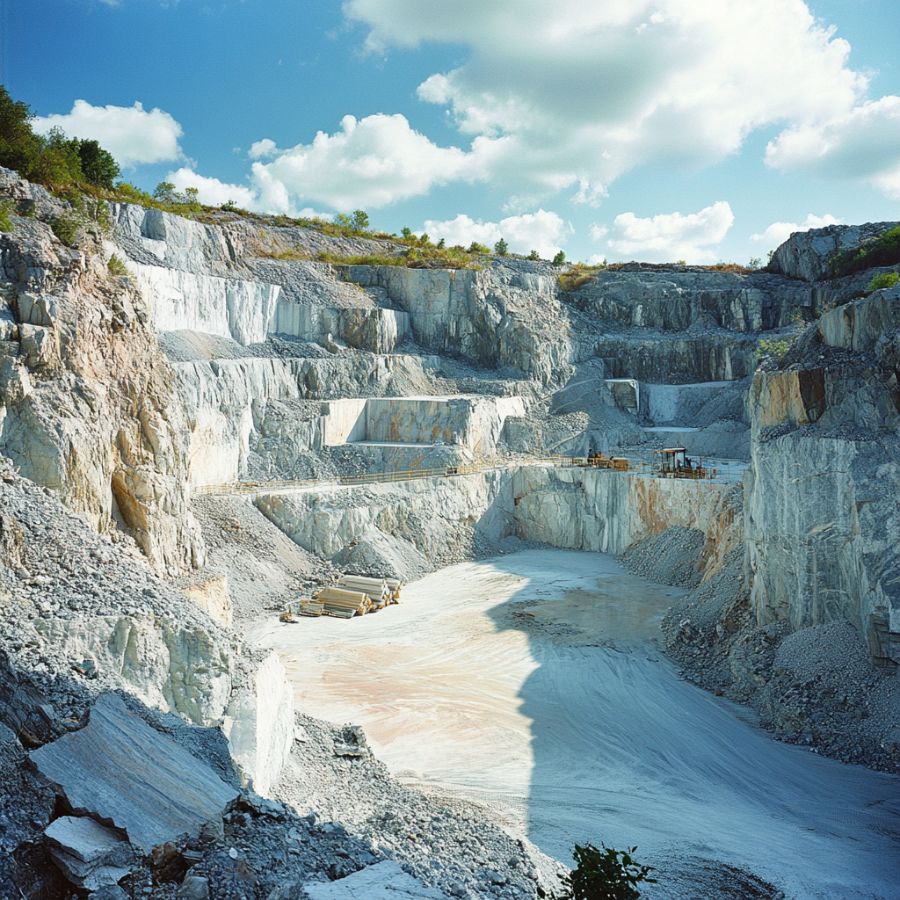
Quarries and mines are excellent places to search for crystals because they expose deep layers of rock that would otherwise be hidden beneath the surface. These sites often contain a variety of minerals and crystals that have been brought to the surface during excavation.
Pay attention to tailings piles, where waste rock is discarded, as they often contain overlooked or broken crystals. Always prioritize safety when exploring these areas and ensure that you have permission to search.
Road Cuts and Construction Sites
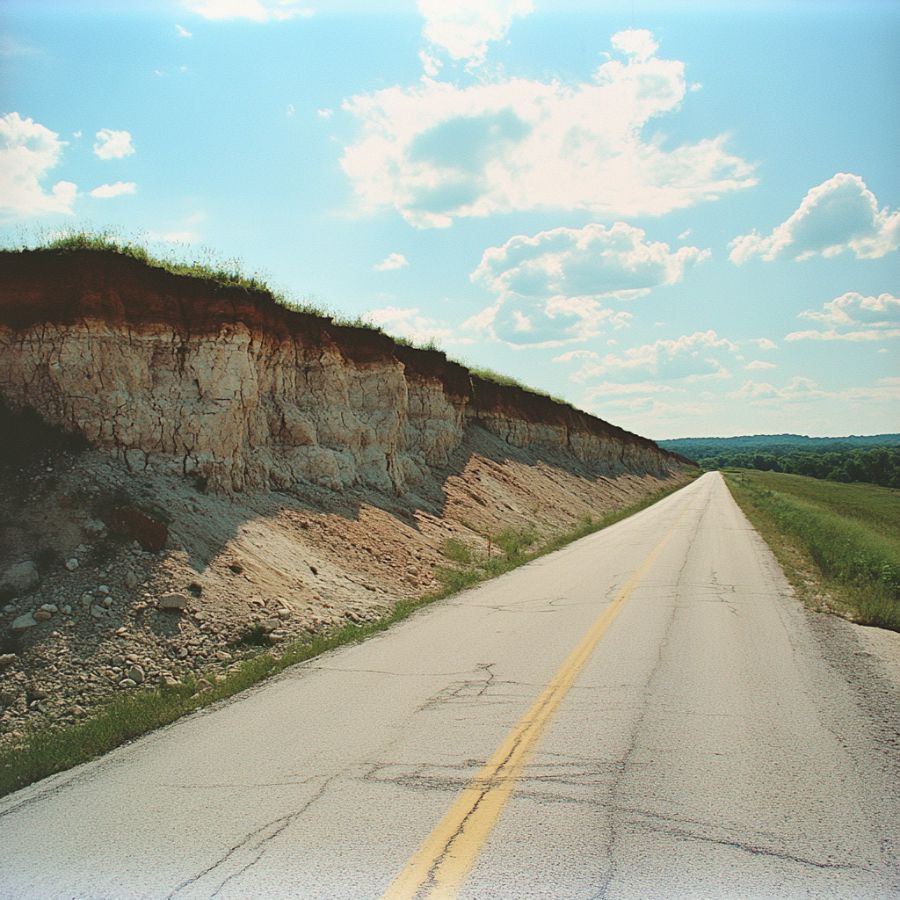
As roads are cut through hillsides or construction projects dig deep foundations, layers of rock and soil that have been undisturbed for millions of years are suddenly exposed.
Look for freshly exposed rock faces, especially where blasting has occurred, as this can create fissures or expose pockets filled with crystals. Be cautious around active construction sites, and always seek permission before exploring.
Mountainous Areas
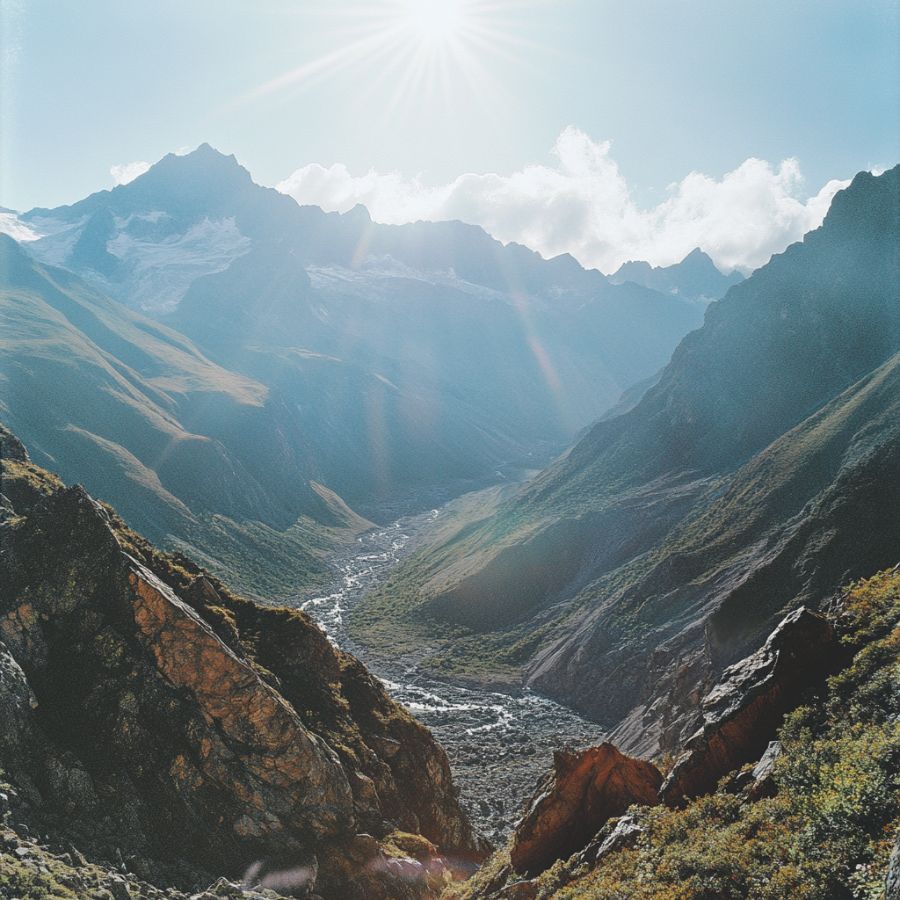
In mountainous regions, erosion caused by wind, rain, and ice can wear away the softer rock, exposing harder crystals that have formed within. Focus on weathered and broken rock formations.
Look for scree slopes, where loose rock has accumulated at the base of cliffs. Additionally, areas near fault lines or volcanic vents are particularly promising, as they often have a higher concentration of minerals.
DON'T MISS OUT ON ANY GREAT FINDS!
While you're out searching for Crystals you're going to find A LOT of other interesting rocks and minerals along the way. The last thing you want to do is toss out something really interesting or valuable. It can be easy to misidentify things without a little guidance.
We've put together a fantastic field guide that makes identifying 140 of the most interesting and valuable rocks and minerals you will find REALLY EASY. It's simple to use, really durable, and will allow you to identify just about any rock and mineral you come across. Make sure you bring it along on your hunt!
Louisiana Crystal Mining Laws And Regulations
It is perfectly legal to engage in crystal mining in Louisiana, provided that you comply with the local laws of our state, especially those from the Louisiana Department of Natural Resources (DNR), which regulates this activity here.
Obtain any necessary permits and permissions from concerned government offices and individuals, like owners of private lands on your search list.
As with any crystal hunting expedition, it’s important to be respectful of the environment and to follow any rules or regulations in the area.
- The extensive local experience and understanding of our team
- Input from multiple local crystal hunters and crystal collecting groups
- The accessibility of the crystal mining locations
- Safety and potential hazards when collecting
- Private and public locations
- A desire to include locations for both experienced crystal hunters and those who are just starting out
Using these weights we think we’ve put together the best list out there for those who love finding new crystals for our collections!
The Best Locations For Crystal Mining in Louisiana
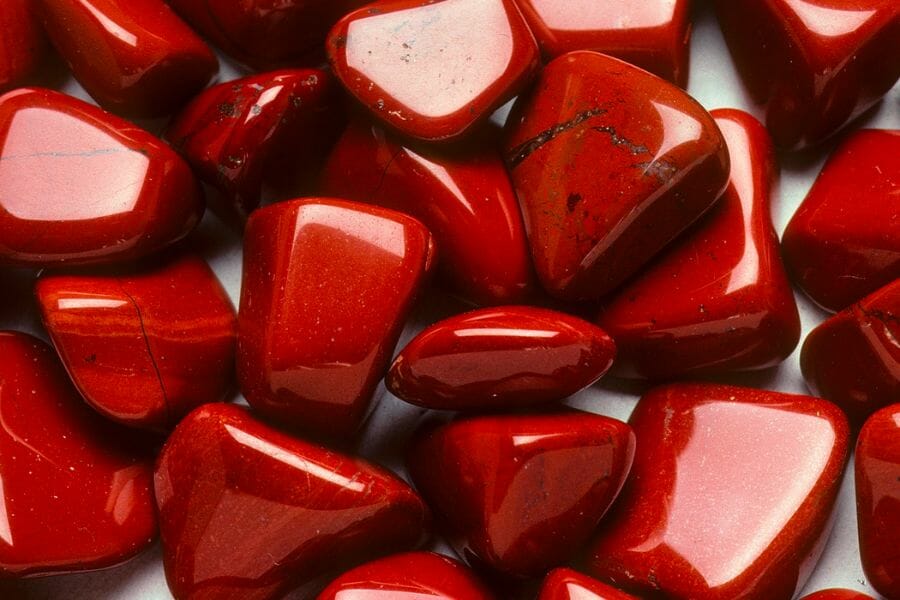
Firstly, we’ll share with you our top recommendations where we had the best time and success finding crystals here.
Always Confirm Access and Collection Rules!
Before heading out to any of the locations on our list you need to confirm access requirements and collection rules for both public and private locations directly with the location. We haven’t personally verified every location and the access requirements and collection rules often change without notice.
Many of the locations we mention will not allow collecting but are still great places for those who love to find beautiful rocks and minerals in the wild without keeping them. We also can’t guarantee you will find anything in these locations since they are constantly changing.
Always get updated information directly from the source ahead of time to ensure responsible rockhounding. If you want even more current options it’s always a good idea to contact local rock and mineral clubs and groups
Sandy Creek is Our Favorite Crystal Mine in Louisiana
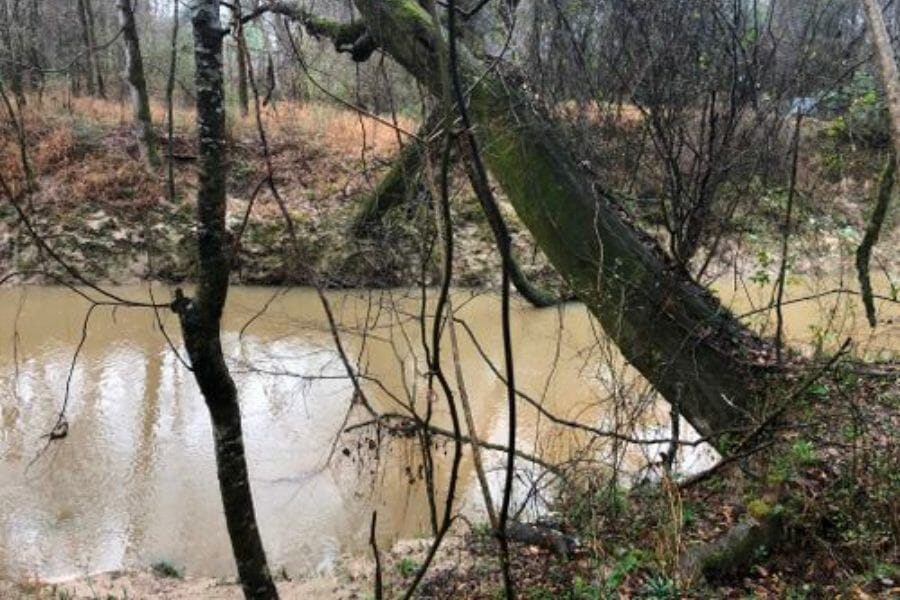
East Baton Rouge Parish, LA
Sandy Creek is a must-visit for anyone who wants to find some truly stunning crystals in our state. It’s also among the impressive places to find Louisiana gems. It’s also known for its beautiful fossilized coral formations. These formations are millions of years old and offer a unique glimpse into the history of our planet.
The geography and geology of Sandy Creek make it an ideal location for finding crystals. The area is filled with sandbars and gravel deposits, which are perfect for sifting through in search of these natural wonders. You’ll also find plenty of limestone formations, which can contain beautiful crystal formations.
Keep in mind that the types of crystals you find will here will depend on the time of year and other factors, so it’s always a good idea to do a little research before you go. Sandy Creek is accessible by car, and there is a designated parking area for crystal hunters. From there, you’ll need to hike down to the creek, which is about a half-mile trek. Once you reach it, keep your eyes peeled for beautiful crystal formations.
Where we found crystals at Sandy Creek
You can find some of the best samples of Agate, Carnelian, Chalcedony, and Jasper crystals in our state if you dig through the Indian Mound areas gravel pit on Sandy Creek.
DON'T MISS OUT ON ANY GREAT FINDS!
While you're out searching for Crystals you're going to find A LOT of other interesting rocks and minerals along the way. The last thing you want to do is toss out something really interesting or valuable. It can be easy to misidentify things without a little guidance.
We've put together a fantastic field guide that makes identifying 140 of the most interesting and valuable rocks and minerals you will find REALLY EASY. It's simple to use, really durable, and will allow you to identify just about any rock and mineral you come across. Make sure you bring it along on your hunt!
Bayou Grand Cane
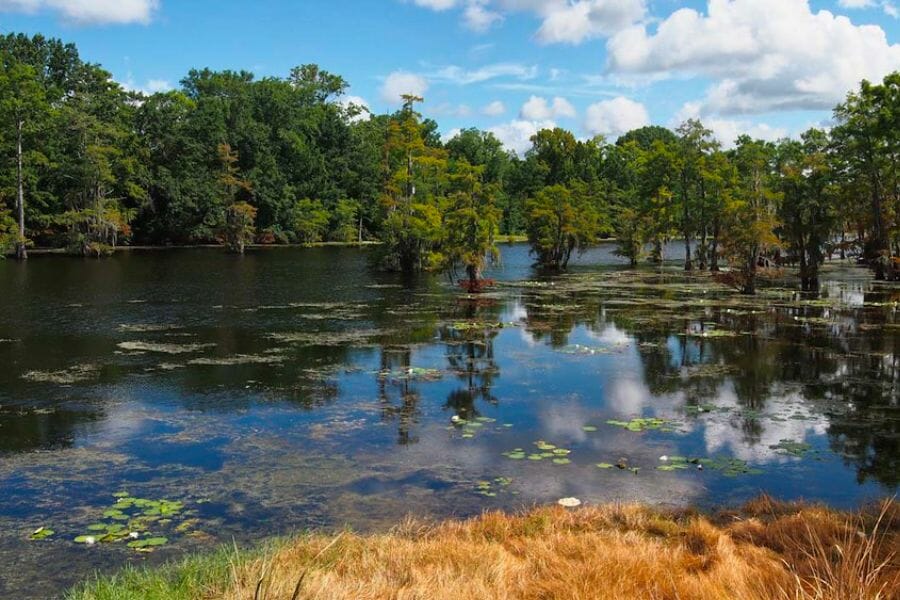
DeSoto Parish, LA
Bayou Grand Cane has a rich history dating back to the early 1800s. This place was used for transportation of goods and supplies, and its surrounding areas were home to many farms and plantations. Today, it is a popular spot for outdoor enthusiasts, including crystal hunters.
Bayou Grand Cane is an ideal location to find crystals in Louisiana because the area is rich in sedimentary rock formations, including limestone and shale. These rocks often contain beautiful crystal formations. The bayou is also home to a variety of other natural features, including sandbars and gravel deposits, which can be sifted through in search of crystals.
If you want to go here, you’re in luck because the location is accessible by car. There are several spots along the bayou where you can park and start your crystal hunting adventure.
Where we found crystals at Bayou Grand Cane
We highly recommend exploring the Southeast of Logansport area along SR-762 all the way to Clement Bayou, especially in the mouth of Bayou Grand Cane for some amazing Agate, Chalcedony, and Jasper crystals. If you have extra time and energy, you can even extend your search to the mouth of Castor Bayou.
Once you get your hands on a specimen, you can also read up our guide on crystal prices in case you’re interested in its value.
Leesville
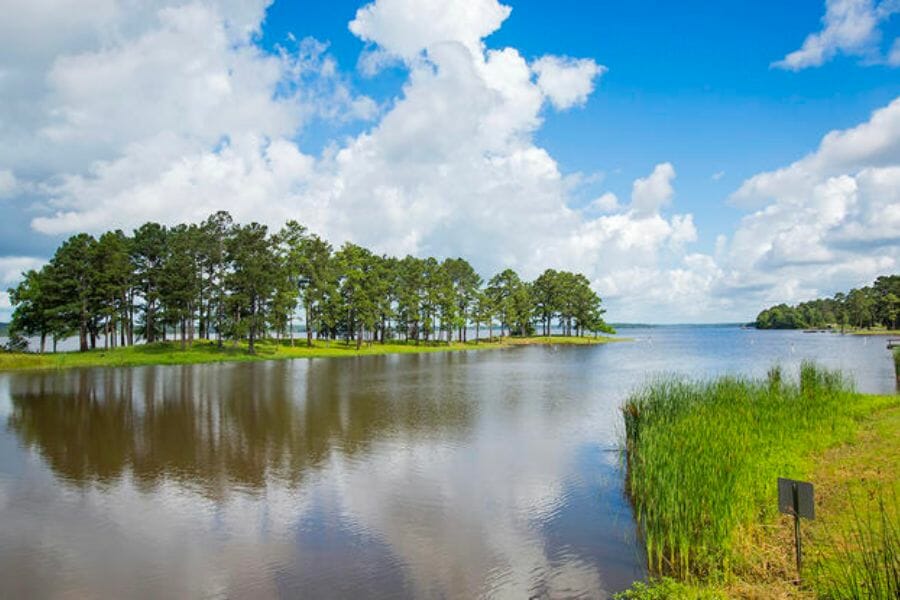
Vernon Parish, LA
Back in the early 1800s, the town of Leesville was originally founded as the seat of Vernon Parish. Since then, it has grown to become a hub of activity in the region. To date, the town is a popular spot for outdoor enthusiasts, including crystal hunters.
Leesville is situated on the edge of the Kisatchie National Forest, which is home to a variety of natural features including hills, creeks, and rock formations. It is rich in sedimentary rocks, which often contain beautiful crystal formations that have been weathered over time.
You can easily reach this town by car if you’re planning to visit here. There are also several spots around the Kisatchie National Forest where you can park and begin your search. Overall, Leesville is an impressive location for anyone who wants to find stunning crystal formations in our state.
Where we found crystals at Leesville
You can find the best samples of Louisiana Opals, which are sandstones bounded together by Opal, when you explore the outcrops of Catahoula Sandstone in Leesville.
Turkey Creek
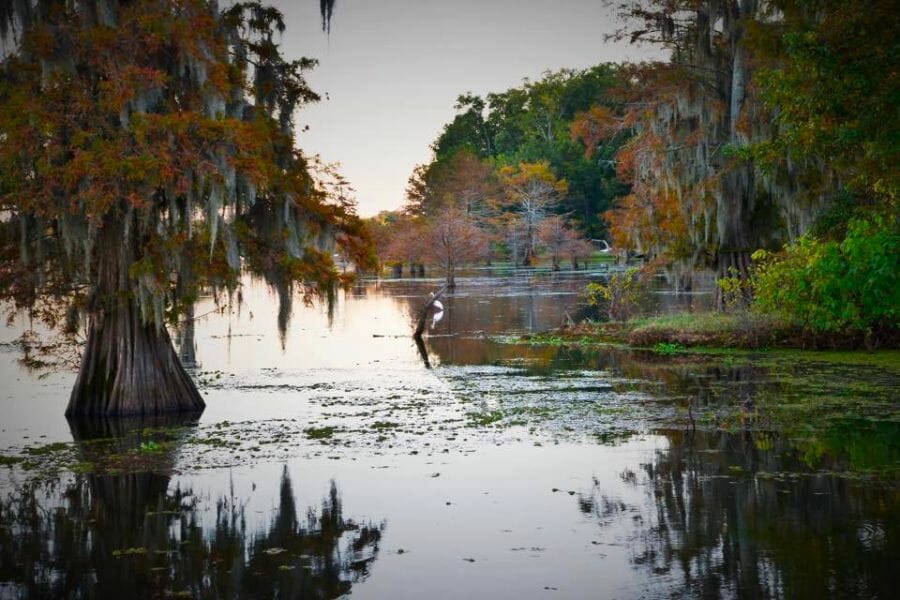
Evangeline Parish, LA
After going around our state, we can attest to the beauty and abundance of crystals in Turkey Creek, so this place belongs to our top recommendations. Turkey Creek area was originally settled by French settlers back in 1800s, and now it’s become a popular spot for crystal mining.
Turkey Creek is situated in an area known as the Louisiana Limestone Plain, which is home to a variety of natural features including hills, creeks, and rock formations. The limestone in the area often contains beautiful crystal formations.
Like our other recommended places, Turkey Creek is easily accessible by car. In fact, there are different spots here where you can park and start your crystal mining journey.
Where we found crystals at Turkey Creek
If you’re here, we highly recommend exploring the west of Turkey Creek, where you can find wonderful Banded Agate, Carnelian, Chalcedony, and Jasper crystals.
Amite River
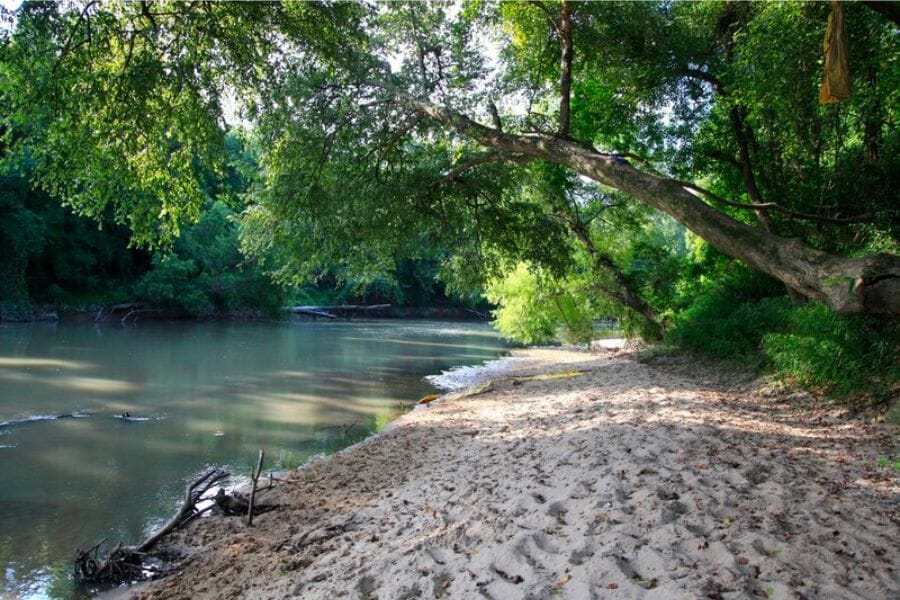
Livingston Parish, LA
Running through southeastern Louisiana, Amite River has a rich history dating back to the early 1800s. The river is named after the Native American word “amiti,” which means “peaceful.”
Amite River runs through the Gulf Coastal Plain, an area known for its abundance of sedimentary rocks. These rocks often contain beautiful crystal formations that have been weathered over time by the flowing water of the river. The crystals you can find here vary in size and color, so you’re sure to find something unique and beautiful.
To get to the Amite River, you’ll need to head to the southeastern part of our state. The great news is, the river is easily accessible by car! When you go here, be sure to bring your hiking boots, as you’ll need to explore the riverbanks and surrounding areas to find the best crystal formations.
Where we found crystals at Amite River
You can find amazing samples of Banded Agate, Carnelian, Chalcedony, and Jasper crystals if you search upstream on the tributary of the river and 1.6 miles south-southeast to the bridge over Amite River.
Our Other Favorite Places For Crystal Hunting
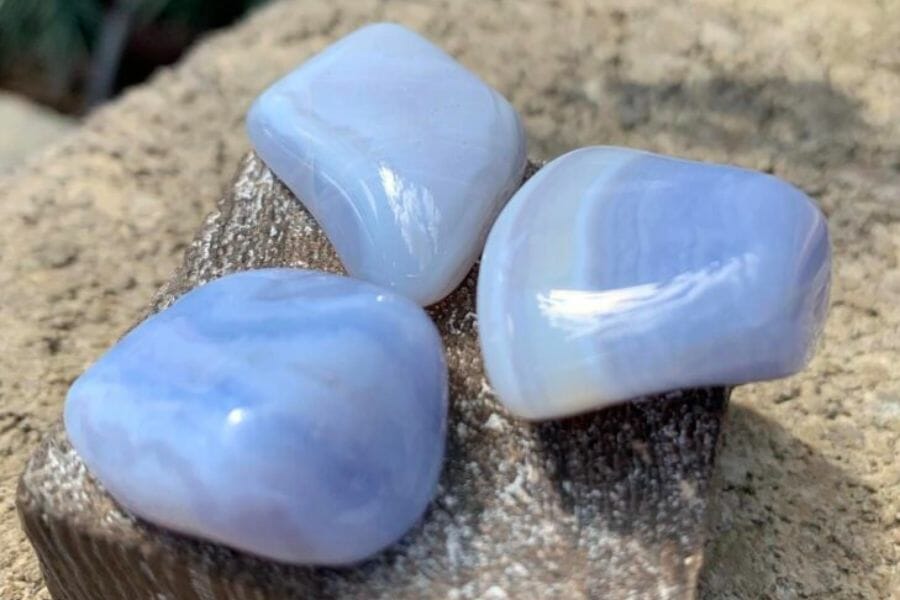
Aside from our top recommended places to find crystals in Louisiana, there are more areas here that abound with crystals. In fact, many of them are also great locations to find Louisiana geodes.
Where you can find crystals for free in Louisiana
Check out these fun areas that you can explore for crystals totally for free:
| County | Location |
| Bienville Parish | 3 miles west of Castor area |
| Catahoula Parish | 2 miles northwest at the gravel hills of Harrisonburg area |
| DeSoto Parish | In the cuts of the Kansas City railroad |
| East Feliciana Parish | Along both sides of Redwood Creek to Norwood |
| Grant Parish | In a series of gravel pits just north of Black Creek |
| Harrison Parish | In creek beds to the northwest of Gulfport |
| LaSalle Parish | Atop large hill in Searcy area |
| Livingston Parish | Regional stream gravels |
| Ouachita Parish | In the gravel pit beside Bayou Lapine |
| Rapides Parish | Pineville area gravel pits |
| Red River Parish | Crossroads area gravel pit |
| St. Tammany Parish | In the Little River at four gravel pits |
| Tangipahoa Parish | In river gravel pits of the Tangipahoa, Bogue Chitto, and pearl rivers |
| Union Parish | On the edge of a creek valley in Spencer area |
| Vernon Parish | In gravel pit near the headwaters of Big Brushy Creek |
| Washington | North of Coburns Creek |
The Best Crystal Shops In Louisiana
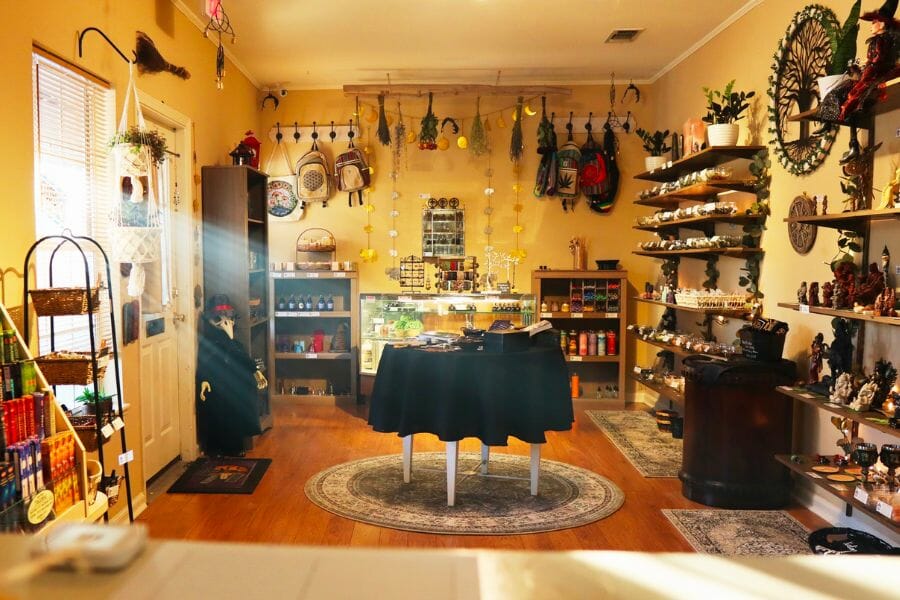
If you want to see and take home different types of crystals in one go, your best chance is to visit the local crystal shops here. While Louisiana may have relatively limited crystal reserves compared to other states, it sure has many stores that sell great selections of these natural wonders. Here are some of them:
- Coyote Moon Crystals and Gifts – 711 Jefferson Hwy Suite 9, Baton Rouge, LA 70806
- Heaven on Earth Rockshop – 108 Rena Dr, Lafayette, LA 70503
- Nola Rockz LLC – 8725 Oak St, New Orleans, LA 70118
- Mysteries Gift Shop – 5808 Jackson St, Alexandria, LA 71303
- Tears of Amethyst Crystals – Summerfield Loop N, Pearl River, LA 70452
- The Witch Depot – 2327 Veterans Memorial Blvd Suite L, Kenner, LA 70062
- Soul Roots – 10319 Old Hammond Hwy STE A1, Baton Rouge, LA 70816
- Cajun Classic Rocks & Minerals LLC – 2317 LA-308, Raceland, LA 70394
- Awakenings – 14111 Airline Hwy Suite 120, Baton Rouge, LA 70817
- The Peace of Mind Center – 3611 Youree Dr, Shreveport, LA 71105
Additional places to find crystals in nearby states
If you’ve already tried all of our recommendations above or are planning a trip out of the state, you should check out our guides for neighboring states:
If you have any recommendations we haven’t covered, please leave them in the comments below!

